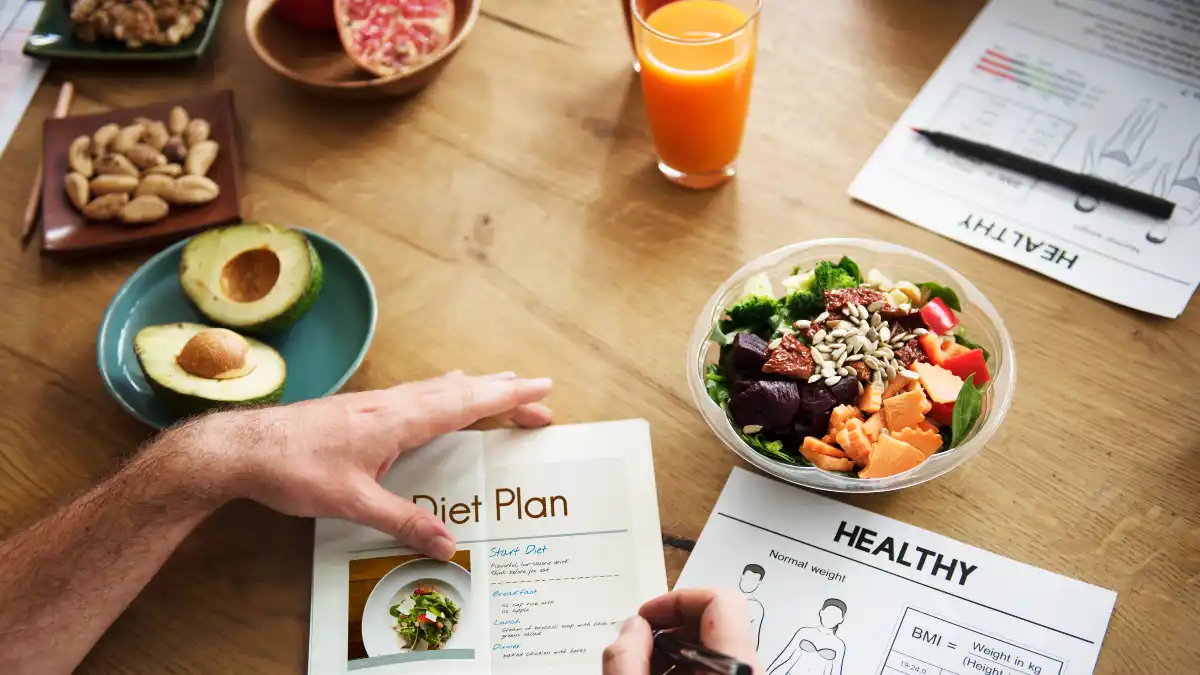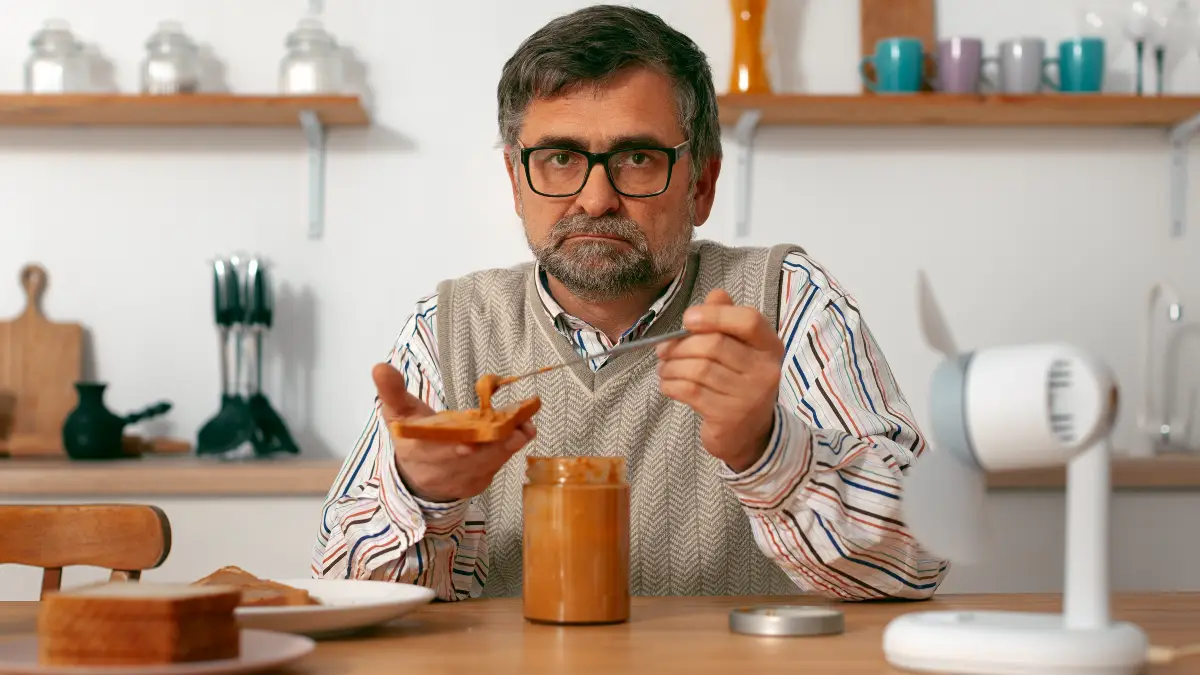It feels like a cruel joke. Your friend eats pizza and ice cream without a second thought, while you gain weight just looking at a carb. For decades, the story has been simple: weight is all about self-control. This narrative is frustrating, especially when your own body doesn’t seem to follow the script.
New research is flipping that old story on its head. Science now shows that biology, not just discipline, plays a huge role. Your genetics, a special type of calorie-burning fat, and the trillions of bacteria in your gut are all part of the equation.
This guide breaks down the science into simple, practical steps you can use to activate these powerful functions in 2025.
The Genetic Lottery: Are You Hardwired to Stay Thin?

The old idea that being thin comes from being more disciplined is being proven wrong by modern genetics. The new science points to DNA, not willpower, as a big reason for a person’s natural body weight.
It’s Not About Willpower, It’s About Your DNA
Major research from the University of Cambridge has given strong proof that genes are often on the side of thin people.
In a big study called STILTS (Study Into Lean and Thin Subjects), scientists looked at the DNA of about 14,000 people. They were put into three groups: thin (1,622), severely obese (1,985), or average weight (10,433).
The study’s main goal was to figure out a “genetic risk score” for each person. This score shows the total effect of many known gene variations that make a person more likely to be overweight.
As they expected, the researchers found that obese people had a much higher genetic risk score than people of normal weight.
The biggest finding, though, came from the thin people in the study. These people had fewer of the genes linked to obesity.
This led the head of the study, Professor Sadaf Farooqi, to a clear conclusion: “This research shows for the first time that healthy thin people are generally thin because they have a lower burden of genes that increase a person’s chances of being overweight and not because they are morally superior, as some people like to suggest”.
This finding helps explain the experience of many who have a hard time with their weight. It changes the story from being about a personal failure to being about biology.
How Scientists Found the ALK “Thinness Gene”
While the idea of a general genetic tendency is important, other research has found one specific gene that is very important: Anaplastic Lymphoma Kinase, or ALK.
A group of scientists from around the world decided to try something new. Instead of looking for genes linked to obesity, they looked for genes linked to thinness.
They studied the Estonian Biobank, a genetic database with over 47,000 people. They compared the DNA of the thinnest 6% of people to people of normal weight.
They found that certain genetic changes in the ALK gene were found much more often in the thin people. Dr. Josef Penninger, one of the main authors of the study, says that these “effortlessly thin” people make up about one percent of the population.
How the ALK Gene Works: The Brain-Fat Connection
The real breakthrough is in knowing how the ALK gene works. The gene is most active in a part of the brain called the hypothalamus. This area is the main control center for the body’s metabolism and energy use.
Tests on mice and fruit flies showed how it works. When scientists turned off the ALK gene, the animals did not get fat easily, even on a bad diet.
Even though they ate the same high-calorie food and were just as active as other animals, the mice without the ALK gene stayed leaner and had much less body fat.
It seems to work through a direct link between the brain and fat tissue. The ALK gene, when it’s active in the brain, acts like a “brake” on how much energy you burn.
It slows down signals from the nervous system that tell fat tissue to break down stored fat for energy. So, having a gene that naturally lowers ALK’s function is like taking your foot off the brake.
This makes the nervous system send more signals, telling fat cells to burn more calories. This leads to more energy being burned overall. This explains why people with these gene variants can stay at a lower body weight even if they eat a lot of calories.
What This Means for You
You can’t change your genes, but knowing how this works is a big deal. The discovery of the ALK gene’s function shows how important the nervous system and energy burning are for staying lean.
Drugs that block ALK are being looked at for treating obesity, but they are currently used for cancer and have major side effects.
So, the key takeaway is not to target the gene itself. Instead, you can support the things this genetic advantage affects.
The next sections will show you scientifically proven ways to improve the very same pathways the “thinness gene” helps: burning more energy and turning on your body’s fat-burning systems.
Your Inner Furnace: How to Burn More Calories with Brown Fat

The genetic advantage from genes like ALK may work, in part, by making a special, active tissue called brown fat work better. Knowing how to turn on this “inner furnace” is a key way to improve your metabolic health.
Why Brown Fat is Different From Other Fat
Your body has different kinds of fat, and each has a different job. The most common is white fat, which is the main place your body stores energy from extra calories.
Brown fat, on the other hand, works the other way: its special job is to burn energy to make heat.
It can do this because of its cells. Brown fat cells are full of mitochondria, which are the power centers of the cell. These mitochondria have a special protein called Uncoupling Protein 1 (UCP1). I
n a normal cell, mitochondria make a molecule called ATP, which is the body’s main energy source. But UCP1 changes how this works. It separates the process of making energy from making ATP. This causes the energy from sugar and fatty acids to be released as heat.
This process, called non-shivering thermogenesis, makes brown fat great at using up energy. It actively takes sugar and fat from the blood to make heat.
The Link Between Brown Fat and Leanness
Babies are born with a lot of brown fat (up to 5% of their body weight) to help them stay warm. For a long time, it was thought this fat went away as we got older.
But research in the late 2000s showed that active brown fat is still in adults, mostly in the neck, above the collarbone, and along the spine.
The amount and activity of this brown fat are closely linked to a healthy metabolism. A huge study looking back at the records of over 52,000 patients found that people with brown fat were less likely to have many metabolic and heart problems.
This included type 2 diabetes, high cholesterol, coronary artery disease, and high blood pressure, no matter their body mass index (BMI). This suggests that even a little bit of active brown fat can give you big health benefits.
The 2024 Breakthrough: Finding Brown Fat’s “Off-Switch”
Even with its potential, turning on brown fat has not been a simple fix for weight loss. A new study from April 2024 showed a key reason why. Researchers found that brown fat has a hidden “off-switch” no one knew about.
It’s a protein called AC3-AT that turns off brown fat soon after it’s turned on. This probably exists to stop the body from getting too hot or wasting too much energy.
This discovery helps explain why turning on brown fat might only work for a short time. In tests, mice that were bred to not have the AC3-AT protein were protected from getting obese.
Their bodies were better at keeping a higher metabolic rate by using their brown fat. This has given scientists a new idea for treatments. They are now looking for safe ways to block this “off-switch” to make brown fat’s heat-producing effects last longer.
How to Activate Your Brown Fat (Safely in 2025)
While medicines for this are being developed, there are several proven lifestyle changes that can help turn on the brown fat you have. They can also help turn some of your white fat into a more active “beige” fat.
Cold Exposure:
This is still the strongest and best-proven natural way to turn on brown fat. When you get cold, your nervous system releases a chemical called norepinephrine. This directly turns on UCP1 in brown fat cells.
Studies show that just two hours a day of being in mild cold, around 61-66°F (16-19°C), is enough to make brown fat more active and increase its amount.
Actionable Tips:
You can do this by turning down your thermostat, ending a warm shower with 60-90 seconds of cold water, taking an ice bath, or just exercising outside when it’s cool.
Exercise:
Being active, especially with high-intensity interval training (HIIT), has been shown to help “brown” your white fat.
Exercise causes your muscles to release a hormone called irisin. This can tell white fat cells to act more like brown fat, including making more mitochondria and UCP1.
Certain Foods:
Some things in food have been shown to help with making heat, but the proof in humans is still growing and often needs large amounts.
- Capsaicin: This is what makes chili and red peppers hot. Some human studies have linked it to more brown fat activity and burning more energy.
- Catechins: These are found in green tea and may also help turn on heat production.
- Ursolic Acid: This is found in apple peels, rosemary, and thyme. It has been studied for its ability to increase brown fat.
- Time-Restricted Feeding (TRF):
New research shows that intermittent fasting, like an 16:8 schedule (eating in an 8-hour window and fasting for 16 hours), may improve metabolic health by turning on heat production in brown fat.
It is important to know that turning on brown fat is not a magic fix. While it does burn calories, experts now think its main benefit for people is not huge weight loss. Instead, it causes a big improvement in how your body handles energy.
By turning on brown fat, your body gets better at clearing sugar and fats from the blood. This improves how your body responds to insulin and helps your heart health—key parts of being lean and healthy.
The Gut Feeling: How to Build a “Lean” Microbiome

The third key piece to the science of thinness is in your gut. Your body is home to a community of trillions of tiny living things—bacteria, viruses, and fungi. Together, they are called the gut microbiome.
This internal community is now seen as a key part of your metabolism that has a big effect on your body weight, energy use, and overall health.
How a Lean Person’s Gut is Different
The mix of gut bacteria is very different between lean and obese people. The most common finding is that a healthy gut, linked to being lean, has lots of different kinds of bacteria.
A wider variety of bacteria makes for a strong and healthy system. On the other hand, people with obesity often have fewer types of bacteria, a problem known as dysbiosis.
Certain types of bacteria are also different. While the exact types can change from person to person, studies often show that lean people tend to have more good bacteria like Faecalibacterium and Bifidobacterium.
In contrast, the guts of obese people may have more bacteria that are very good at pulling calories from food. This means they get more calories from the same meal.
3 Ways Gut Bacteria Affect Your Weight
The gut microbiome affects body weight in a few ways that are linked together:
Getting Energy from Food:
As said before, some bacteria are better at breaking down fiber into short-chain fatty acids (SCFAs). While SCFAs are usually good for you, having too many bacteria that are great at getting energy can lead to taking in more calories than you burn, causing weight gain.
Inflammation:
A healthy gut keeps your gut lining strong. When the gut is out of balance, this lining can become leaky. This lets parts of bacteria that cause inflammation, like lipopolysaccharides (LPS), get into the blood.
This type of long-term, body-wide swelling is strongly linked to problems with insulin and more fat storage.
Controlling Appetite:
The gut and brain are always talking to each other through the “gut-brain axis.” Gut bacteria make many chemicals that can affect the hormones that control hunger and fullness, like ghrelin and leptin.
This can change how much you eat and what you crave.
4 Steps to Build a “Lean” Gut in 2025
Unlike your genes, your gut microbiome is easy to change through your diet and lifestyle. Building a diverse, “lean” gut is one of the best things you can do for your long-term metabolic health.
Eat a Variety of Plants:
This is the best thing you can do. As gastroenterologist Dr. Will Bulsiewicz says, “The single greatest predictor of a healthy gut microbiome is the diversity of plants in one’s diet”.
Eating many different plants gives your gut different kinds of fibers and polyphenols, which feed different kinds of good bacteria.
A good goal is to eat 30 or more different kinds of plants each week. This includes fruits, vegetables, whole grains, beans, nuts, and seeds.
Eat More Fiber (Prebiotics):
Your body can’t digest fiber, but it is the main food for your good gut bacteria. These are called prebiotics. Eating foods full of prebiotics like garlic, onions, leeks, asparagus, bananas, and whole grains helps feed the good microbes.
Eat Fermented Foods (Probiotics):
Fermented foods have live, good bacteria (probiotics) that can add to the good bacteria in your gut. Eating foods like yogurt with live cultures, kefir, kimchi, sauerkraut, miso, and kombucha regularly can bring in good bacteria and make your gut more diverse.
Limit Sugar, Artificial Sweeteners, and Processed Foods:
Diets with a lot of sugar and processed foods can help bad bacteria grow, cause inflammation, and lead to an unhealthy gut balance.
These three systems—genes, brown fat, and the gut—are not separate. They are all connected.
The same diet and lifestyle choices that help your gut, like eating a variety of plants, also give you the things (like catechins and capsaicinoids) that may help your brown fat work.
In the same way, exercise helps both your gut diversity and the “browning” of your fat. So, the best way to do this is with a plan that helps all three systems at once.
Your 2025 Action Plan: 3 Steps to Boost Your Metabolism

Putting together the latest research on genes, brown fat, and the gut gives us a clear plan to improve metabolism.
The goal is not to get a short-term boost. It is to change the rate your body naturally burns calories, as endocrinologist Dr. Marcio Griebeler advises. This takes a simple, three-part plan that uses nutrition, movement, and lifestyle habits to support your body’s natural thinness systems.
Step 1: Eat to Fuel Your Body
Focus on Protein:
Your body uses more energy to digest protein than other foods. Protein uses 20-30% of its energy for metabolism, while carbs use only 5-10% and fats use 0-3%.
Getting enough protein in every meal helps you burn more calories each day. It is also important for keeping muscle, which burns calories, especially when you are managing your weight.
Eat Fiber & a Variety of Plants:
Make the “30 plants per week” goal a key part of how you eat. This is the best way to build a diverse and strong gut microbiome, which is key to metabolic health.
Think About Timing:
Research shows that when you eat is important. The body’s metabolism seems to work better earlier in the day. Studies show that people who work night shifts and eat late at night tend to gain more weight.
Try to eat most of your calories earlier in the day and don’t eat big meals right before bed.
Add Thermogenic Foods:
These are not a magic fix, but adding foods with capsaicin (chili peppers), catechins (green tea), and other heat-producing things can give a small boost to your metabolism.
Step 2: Move to Build a Calorie-Burning Engine
Lift Heavy Things:
Muscle burns more calories than fat, even when you are resting. A regular strength training program is the best way to build and keep lean muscle. This will raise how many calories you burn at rest.
Add HIIT:
High-Intensity Interval Training involves short bursts of hard work followed by short rest periods. It is very good at boosting your metabolism.
The “afterburn” effect means your body keeps burning more calories for hours after you finish your workout. HIIT may also help “brown” your white fat by releasing irisin.
Use Cold:
Add some mild cold exposure to your routine to turn on your brown fat. You don’t need to do anything extreme; small, regular exposures work well.
This can be as easy as turning down your thermostat, taking short cold showers, or exercising outside in cool weather.
Step 3: Improve Your Lifestyle Habits
Get Enough Sleep:
Not getting enough sleep is really bad for your metabolism. It raises the stress hormone cortisol, which tells your body to save energy by storing fat.
It also messes up your hunger hormones, ghrelin and leptin, and makes it harder to make good decisions. Try to get 7-9 hours of good sleep each night.
Manage Stress:
Long-term stress does the same thing as not enough sleep. It keeps cortisol levels high, which makes it very hard to lose weight.
Finding ways to manage stress that don’t involve food, like meditation, deep breathing, yoga, or hobbies, is key for hormone balance and a healthy metabolism.
Stay Hydrated:
Drinking enough water is important for almost everything your body does, including digestion and metabolism.
Being hydrated helps keep your gut lining healthy and helps move nutrients where they need to go. This is very important for a healthy gut microbiome.
This table gives you a quick summary of these tips. It links each action to the body system it helps.
| Strategy | What It Activates | How to Do It (2025) |
| Mild Cold Exposure | Turns on Brown Fat Heat Production (UCP1) | End your daily shower with 60-90 seconds of cold water. Keep your home at 66°F (19°C). |
| High-Intensity Interval Training (HIIT) | Boosts resting metabolism; Helps “brown” white fat | 2 times a week: A 20-minute workout with 1 minute of max effort (like sprints) then 2 minutes of rest. |
| Increase Plant Diversity | Feeds “lean” gut bacteria; Makes gut more diverse | Try to eat 30+ different kinds of plants each week. Add one new vegetable or herb to your list each week. |
| Eat More Protein | Has the highest thermic effect of food; Keeps muscle that burns calories | Have a palm-sized piece of lean protein (fish, chicken, beans, tofu) with every meal. |
| Strength Training | Builds muscle that burns calories, raising your resting metabolism | 2-3 times a week: A full-body workout with moves like squats, deadlifts, and push-ups. |
| Time-Restricted Feeding (16:8) | May turn on brown fat; Improves insulin sensitivity | Eat all your food for the day in an 8-hour window, for example, from 10 AM to 6 PM. |
| Get Enough Sleep | Lowers cortisol; Controls hunger hormones (ghrelin/leptin) | Try to get 7-9 hours of sleep each night. Go to bed and wake up at the same time every day. |


